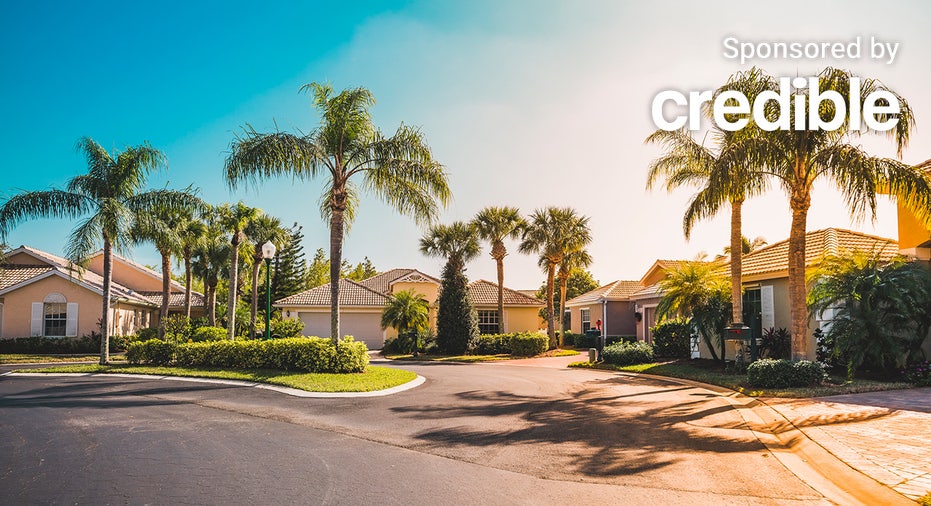The South is ranked highest for prospective homebuyers, despite high underwater mortgage rates
Florida and Texas metros are ranked highest for new buyers

San Antonio and Tampa saw the largest jumps in home inventory. (iStock)
Today’s homebuying market remains in the hands of the sellers, with competition still hot and prices fluctuating. There are a few states that are slightly more affordable than others, Zillow found in a recent study.
Cities in Texas and Florida make up most of Zillow’s top 10 best places for homebuyers. The two states make up seven of the 10 metros listed. These areas have slightly less competition, particularly thanks to new-build homes.
"Prospective buyers in most markets today are feeling less intense competition than in recent spring shopping seasons. Pressure is easing up as mortgage rates raise costs and sellers return," Skylar Olsen, Zillow’s chief economist, said. "However, the pool of homes for sale remains remarkably low. This means the nation remains a seller's market despite high mortgage rates — homes are selling faster, with more buyer interest over any one listing, than pre-pandemic."
Austin and San Antonio are two of the Texas markets that have seen the highest jumps in inventory this year. The number of homes available in San Antonio rose by 27.4% and Austin's inventory grew by 11%.
In Florida, Tampa, Orlando and Jacksonville all had more housing inventory added than other areas of the country. Tampa saw listings rise by 50.1%, Orlando inventory rose by 41.6% and Jacksonville inventory by 37.2%.
If you think you’re ready to shop around for a home loan, consider using Credible to help you easily compare interest rates from multiple lenders in minutes.
MOST HOMEOWNERS WOULD RATHER REMODEL THEIR HOME THAN BUY ANOTHER HOME: STUDY
Other states in the South and Midwest see rise in underwater mortgages
Prospective homebuyers are having an easier time in states like Florida and Texas, but in other Southern and Midwestern states, homeowners are struggling to keep up with high-cost mortgage payments, ATTOM found in its Home Equity & Underwater Report.
Nearly 45.8% of properties with mortgages were considered equity-rich in the first quarter, which has declined from 46.1% in the last quarter of 2023.
On the other hand, the percentage of mortgages considered seriously underwater rose in the first few months of the year. Currently, 2.7% of mortgages are underwater in the U.S., up from 2.6% at the end of last year, ATTOM reported.
"Homeowner balance sheets continue to benefit in a huge way from the boom times in the form of elevated equity that can be used to help finance all kinds of things, from home renovations to business startups. Still, the windfalls are starting to erode bit by bit amid mounting signs that the market is no longer so super-heated," Rob Barber, the CEO of ATTOM, said.
Southern states like Kentucky saw some of the largest quarterly declines. Homes considered equity-rich in the state have decreased from 35.4% to 28.7% in the last few months.
South Carolina also saw the number of equity-rich homes decrease from 42.4% to 40%. Georgia, Delaware and Indiana were the other three states most affected by declining equity rates.
Nearly half of U.S. states did see an increase in equity-rich levels, but only by a percentage point or so. Equity increased in many Western states and a few Midwestern states as well. Hawaii’s equity-rich homes rose from 55% to 56.5%, South Dakota is up from 49.8% to 51.5% and Montana is up from 57.3% to 58.7%.
A site like Credible can let you view multiple mortgage lenders and provide you with personalized rates within just minutes, all without impacting your credit.
AMERICANS TYPICALLY SPEND ABOUT 24% OF THEIR INCOME ON MORTGAGE PAYMENTS
Over a million homes sales lost due to lock-in effect
The last few years have seen less and less existing home inventory, largely due to rising interest rates. This is because high interest rates can push homeowners to stay in their homes, especially if they are locked into a lower rate. Many owners aren’t willing to trade the low interest rate they got during the pandemic for one near 7%.
This rate-lock effect has created a void in the housing market. An estimated 1.3 million home sales were lost between Q2 2022 and Q4 2023, a Federal Housing Finance Agency report stated. Nearly 182,490 of these sales were in California alone.
The report found "that for every percentage point that market mortgage rates exceed the origination interest rate, the probability of sale is decreased by 18.1%." As rates kept rising, homeowners held on a little harder to their homes.
Buyers aren’t likely to get a break in the market anytime soon, as high prices, high interest rates and low inventory levels hang on.
"Mortgage rate trends aren't likely to bust the lock-in effect until at least the end of the year, and possibly well into 2025, as the Fed holds fast on fighting inflation," Realtor.com senior economist Ralph McLaughlin predicted.
"We'll likely need to see a 150 to 200 basis points drop in the 10-year yield to get there, and at current spreads, this could require three to four rate cuts by the Fed. As of now, the market is pricing in just one to two cuts by the end of the year and two to three cuts in 2025," McLaughlin said.
To see if you qualify for a mortgage based on your current credit score and salary, consider visiting Credible, where you can compare multiple mortgage lenders at once.
RENTING IS SLIGHTLY CHEAPER THAN BUYING, PUSHING GEN Z TO RENT MORE OFTEN THAN BUY
Have a finance-related question, but don't know who to ask? Email The Credible Money Expert at moneyexpert@credible.com and your question might be answered by Credible in our Money Expert column.